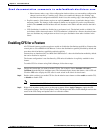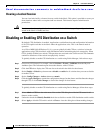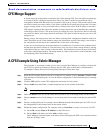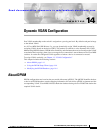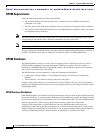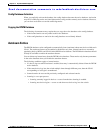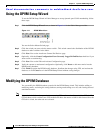
CHAPTER
Send documentation comments to mdsfeedback-doc@cisco.com.
13-1
Cisco MDS 9000 Family Fabric Manager Configuration Guide
OL-6965-03, Cisco MDS SAN-OS Release 2.x
13
VSAN Configuration
You can achieve higher security and greater stability in Fibre Channel fabrics by using Virtual SANs
(VSANs) in Cisco MDS SAN-OS. VSANs provide isolation among devices that are physically
connected to the same fabric. With VSANs you can create multiple logical SANs over a common
physical infrastructure. Each VSAN can contain up to 239 switches and has an independent address
space that allows identical Fibre Channel IDs (FC IDs) to be used simultaneously in different VSANs.
VSAN members can join the VSAN statically or dynamically.
This chapter includes the following sections:
• About VSANs, page 13-1
• Configuring a VSAN, page 13-2
• Deleting VSANs, page 13-3
About VSANs
A VSAN is a group of hosts or storage devices that communicate with each other using a virtual topology
defined on the physical SAN. Using VSANs, you can build a single topology containing switches, links,
and one or more VSANs. Each VSAN in this topology has the same behavior and property of a SAN. A
VSAN has the following additional features:
• Multiple VSANs can share the same physical topology.
• The same Fibre Channel IDs (FC IDs) can be assigned to a host in another VSAN, thus increasing
VSAN scalability.
• Every instance of a VSAN runs all required protocols such as FSPF, domain manager, and zoning.
• Fabric-related configurations in one VSAN do not affect the associated traffic in another VSAN.
• Events causing traffic disruptions in one VSAN are contained within that VSAN and are not
propagated to other VSANs.
Default and Isolated VSANs
Up to 256 VSANs can be configured in a switch. Of these, one is a default VSAN (VSAN 1), and another
is an isolated VSAN (VSAN 4094). User-specified VSAN IDs range from 2 to 4093.



